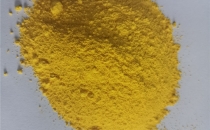
4. Affect the normal life of the building: When the chloride ion content in the concrete is high, the steel bars in it will be corroded, the concrete will expand and loosen, reducing its chemical corrosion resistance, wear resistance and strength, and destroying the building structure.

The hazards of chloride ions in zinc smelting mainly include the following aspects:
1. The existence of chloride ions affects the normal progress of the zinc electrowinning process, which not only intensifies the corrosion of the lead anode, but also makes it difficult to strip zinc in the electrowinning operation;
2. The increase in the power consumption of the lead anode also leads to an increase in the lead content of the cathode zinc; the increase in the chlorine above the electrode tank deteriorates the operating conditions and seriously affects the health of the workers. According to its process requirements, the chloride ion content in the zinc solution during electrolysis It should be controlled below 200mg/l to ensure the smooth progress of production, otherwise it will bring a lot of inconvenience to the electrowinning of zinc and seriously affect the electrolytic efficiency of zinc electrowinning and the quality of electrolytic zinc products.
Present introduction of bismuth oxide dechlorination process in wastewater
1. The bismuth oxide method is that after adding bismuth oxide reagent to the original solution, the bismuth ions formed under acidic conditions will be hydrolyzed with bismuth ions and chloride ions within a certain pH range to form insoluble bismuth oxychloride precipitates to remove the bismuth oxychloride in the original solution. Chloride.
2. With this method of chlorine removal process, bismuth oxide can be repeatedly used for purification, saving production costs
So how to use bismuth oxide to remove chlorine in zinc hydrometallurgy? Now, I will introduce the methods of chlorine removal in zinc hydrometallurgy at this stage, mainly including alkali washing, copper slag method, ion exchange method and so on. The materials used in the production system are zinc oxide fumes produced by top-blown lead smelting furnaces. The materials contain relatively high lead, reaching about 40%, and part of the fluorine and chlorine in the fumes are in the form of insoluble substances such as PbF2 and PbCl2. When sodium carbonate (or sodium hydroxide) is used for alkaline cleaning, the chlorine removal rate can only reach about 30%, which fails to achieve the desired effect; when copper slag is used for chlorine removal, because of the material characteristics, the zinc oxide fume basically does not contain copper, so it is necessary to Supplement a large amount of copper sulfate and zinc powder to create the conditions for dechlorination of copper slag, resulting in high cost of dechlorination, and when the copper slag is returned to use, the dechlorination effect of the copper slag is unstable due to factors such as copper slag storage and oxidation for a long time; When the ion exchange method is used to remove chlorine, only 50% of the chlorine can be removed, because the material contains relatively high chlorine, and the ion exchange method cannot meet the requirements of electrolytic zinc for chloride ions. At the same time, the regeneration of the resin consumes a lot of water and produces a lot waste water.
Using bismuth oxide to remove chlorine can achieve the following characteristics
1. The chlorine removal effect is stable, basically maintained at about 80%.
2. While removing chlorine, bismuth oxide can also remove 30%-40% of fluorine, which provides favorable conditions for the normal operation of electrolysis.
3. Consumption of main reagents From the perspective of industrial application, in the process of using bismuth oxide to remove chlorine, the unit consumption of zinc per ton of caustic soda is 66kg/t, and the unit consumption of zinc per ton of basic zinc carbonate is 60kg/t. The unit water consumption is 2m3/t, the consumption of reagents is small, the amount of wastewater generated is small, and there is basically no loss of zinc. Bismuth oxide is a one-time input and can be used for a long time. After long-term operation, the chlorine removal effect has decreased. This is because other impurities exceed the standard. After the impurity removal process, it can be recycled and put into the system again, and the effect is still very good.